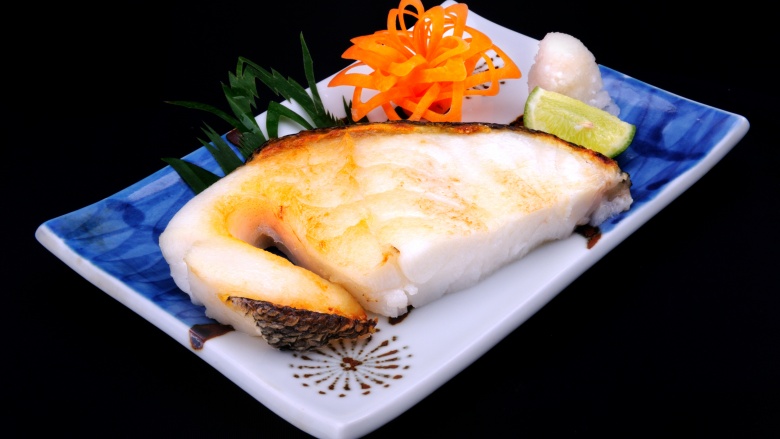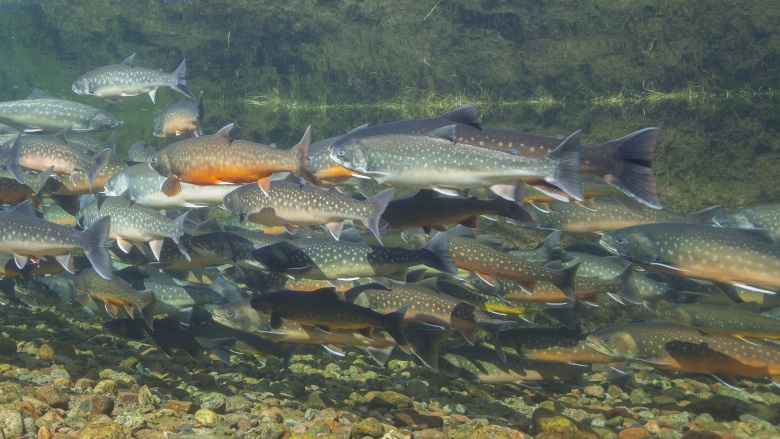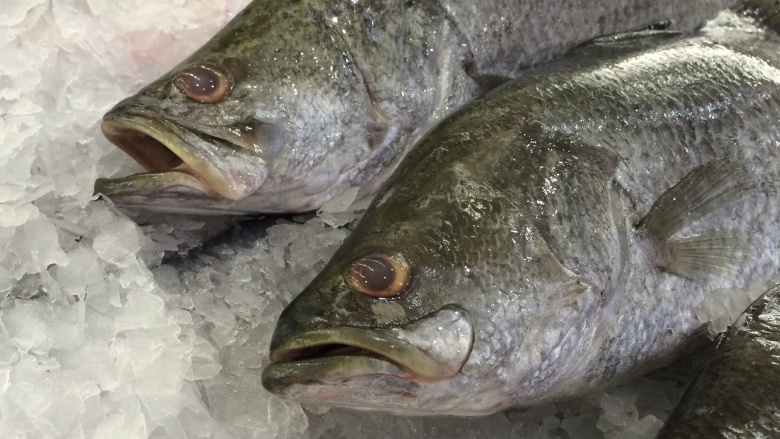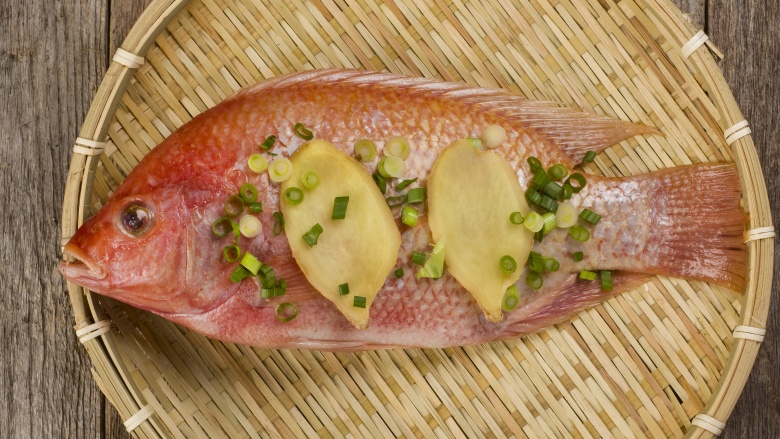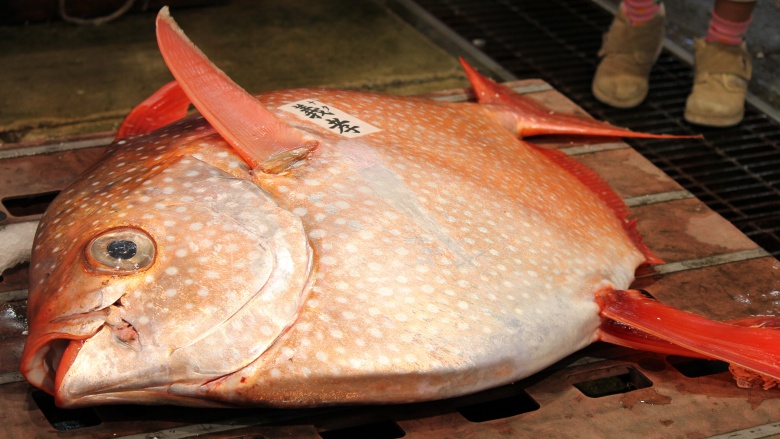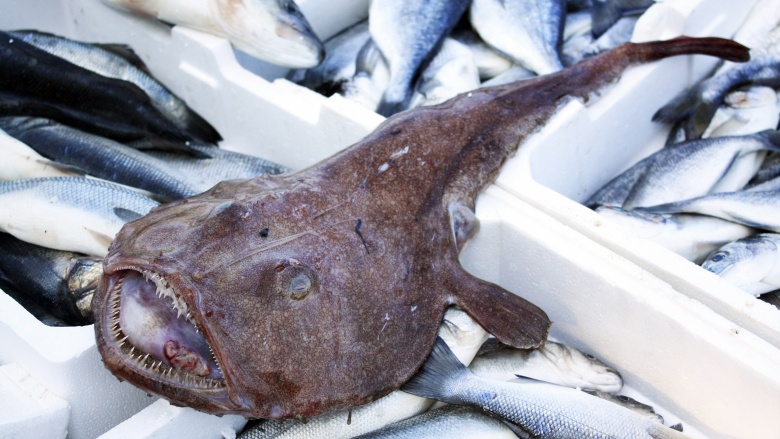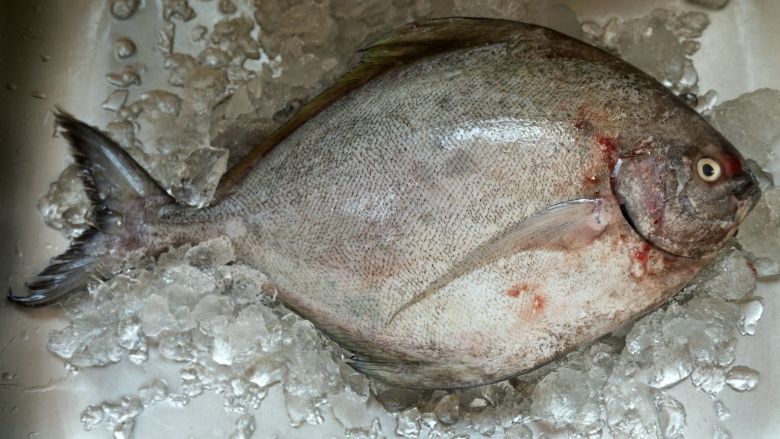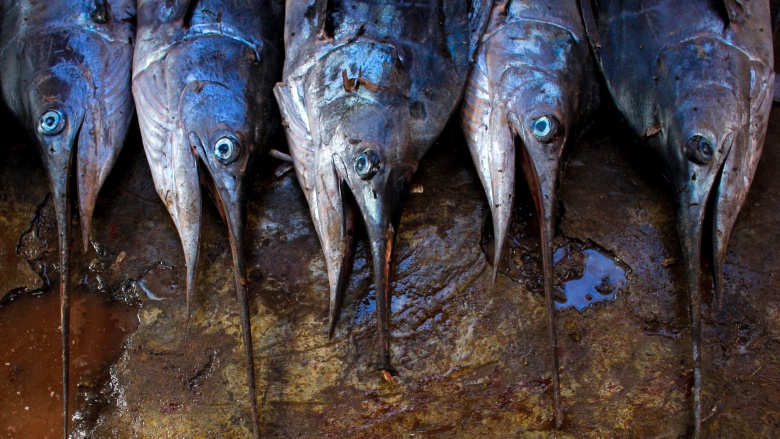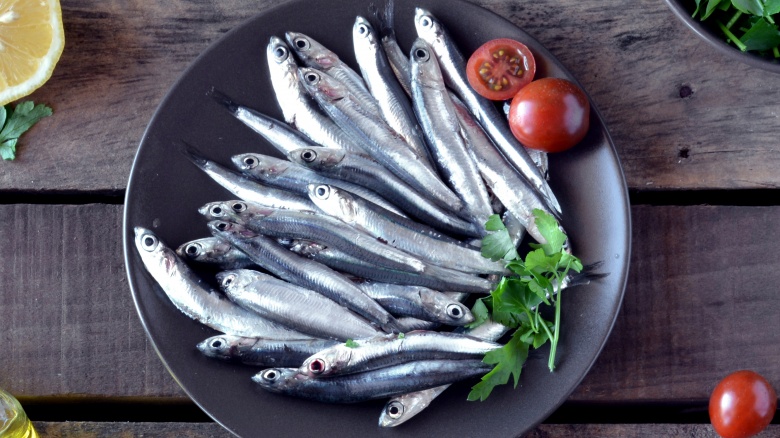Fish You're Not Eating But Should Be
If you're the sort that regularly serves fish, you undoubtedly have some go-to favorites. They're probably things like tuna, salmon, and cod, and maybe even hake once in a while. That's what you usually see in stores and restaurants, after all. But there are all kinds of fish in the sea — should you really restrict yourself to just a few choices? These fish probably slip through your net, maybe due to their reputation or something about their appearance. Hopefully, you can change your mind enough to give them a go.
Sardines
Yes, sardines are a little cringeworthy, even if you love fish. They ruin pizza, and no one wants to spend pizza night having the food stare back at you. But if you want a serious nutritional boost, you should give them a try.
Sardines are tiny, and they feed on plankton. That means they're very near the bottom of the food chain, which is a good thing. If you're concerned about the presence of mercury or other chemicals in your fish, sardines don't have any of that simply because they're not eating sources of it. They might be hard to find in a restaurant or in the fresh section of the supermarket because they're occasionally off-limits for the world's fishing industry to let populations recover. But they reproduce and replenish themselves quickly.
Sardines are also a win-win on the nutritional front. They're at the top of the list of fish that contain a high amount of omega-3 fatty acids, and they're also a good source of protein, calcium, and vitamin D. The calcium comes from the completely edible bones. If you're still cringing at the thought, check out Chowhound's post on recipe ideas that don't include eyeballs staring at you.
Sablefish
The sablefish industry isn't massive, but because of the steep price tag that comes on this fish, it's a wealthy one. That price tag is there because sablefish are extremely migratory and have a very long life span. It's considered "common" to find 40-year-old sablefish in commercial catches destined for your dinner plate. If the price per pound isn't a deterrent, you'll find it's a fish well worth it. Sweet and flaky, it's a popular choice in Japan and a fish that's excellent for preparing in a smoker. It's high in omega-3 fatty acids, which is exactly what you want in your fish, and it has a nutritional value on par with wild salmon. You might want to keep an eye on where your sablefish comes from, though. The National Oceanic and Atmospheric Administration recommends Alaskan-caught sablefish, which have very low amounts of bad things from the ocean, like mercury. If you're looking for recipes, keep in mind that it's also called black cod, even though it isn't cod. Check out this recipe for a take on smoked sablefish, and a great story on what it's like to catch your own.
Arctic char
Arctic char is, as its name suggests, a fish that comes from the world's northernmost reaches. It's also found in some deep lakes in Europe and Great Britain, in isolated pockets that spawned after their ancestors headed south during the last ice age. That means that if you're not in Canada or near any of these places, you're not going to get any locally sourced Arctic char, but if you're looking for something different that's still healthy, it's worth scouting out.
This fish is farmed all year long, so it should be available no matter the season. It's great for typical preparations like boiling or grilling, and it's also used in sushi, tastes great out of the smoker, and can even be fermented or salted and cured. So why should you be eating it? The Arctic char is lower in fat than other fish in the salmon family, and of the fat it does have, around 80 percent of it is the good kind that your body needs and can easily process. It's also a good source of things like vitamin B-12, A, and D. If you're in a hurry, try this recipe for a healthy baked garlic and dill arctic char.
Barramundi
The barramundi, aka the Asian sea bass, is native to a very particular area through northern Australia and southeast Asia, but it's slowly spreading to the rest of the world as a favorite in commercial fisheries.
There are a few great reasons for this. The barramundi is about on par with salmon for its prized levels of omega-3 fatty acids, but the barramundi is one of the few fish that can survive on a vegetarian diet and still produce high levels of omega-3. In comparison, salmon need to eat around three pounds of fish to add one pound of meat on their own bones. And because barramundi don't need the space salmon do, they can be raised in a smaller, more controlled environment that ultimately means they're not exposed to potential contaminants. What does all that mean for you? If you're concerned about the environment and the future of sustainable farming, it means a lot.
Nutritionally, barramundi has a lot going for it. A single portion has about half the calories of a portion of salmon, and it's low in overall fat with almost no saturated fat. Since it's flexible when it comes to preparation, you're sure to find something that will suit your family's tastes. If you're browsing for a recipe, this Australian site has plenty of options.
Red snapper
Red snapper is a winner all around. It's high in omega-3 fatty acids, potassium, and vitamin A, and a single serving has most of your daily requirement of selenium. Selenium has been linked to the prevention of cancer, rheumatoid arthritis, and heart disease, and it also helps support your white blood cells and immune system. That's all good, but there are a few catches. Red snapper tends to be high in mercury, so that's a consideration to take into account if you're going to add it to your evening menu. It's generally not a problem if it's a once-in-a-blue-moon sort of meal, and it's even less of a problem for anyone who's not pregnant or nursing.
There's also another thing to be aware of, even if it's tough to be on the lookout for. Since red snapper is generally a high-value fish, there's always the possibility that you might be buying something else. In 2013, tests done by an organization called Oceana found that one sample out of every three pieces of fish tested was completely mislabeled, and red snapper is considered "the poster child for fish fraud."
That means there's a chance that even if you think you've been eating red snapper, you may have been getting a cheaper form of white fish. Buying from a trusted source is key. So is picking out all the best recipes for your family's tastes, like some of these from the BBC.
Moonfish
The history of the moonfish in Hawaii is as colorful as the fish itself. Also called opah, it's been an important part of Hawaii's longline fishing industry for a long time. Some fishermen would consider hooking a moonfish to be a sign of good luck and would give the moonfish away rather than taking it to market to sell it. It still hasn't become mainstream, and when you see it on menus or in shops, it tends to be reserved for the daily special. That's a shame, but when you see it show up, try it.
An extremely versatile fish that's high in oil content, it can be eaten raw, smoked, or anywhere in between. Different parts of the fish yield different types and textures of meat, so knowing what you're looking at and what your recipe calls for is a must when it comes to the moonfish. But figure that all out and you'll find it's the center of a dish that's high in B-6, B-12, protein, niacin, phosphorus, and selenium. If you're worried about your sodium intake, it's an excellent low-sodium option.
It also has the omega-3 fatty acids that you expect from a good fish, and fishing practices in Hawaii are being done sustainably. Plenty of recipes take their inspiration from the tropics, like this one for grilled moonfish with a mango, papaya, and avocado salsa.
Monkfish
Don't let the appearance of the monkfish fool you. Give it a try and you might be surprised with a flavor that's given this ugly angler fish the nickname of "poor man's lobster." The meat of the monkfish is firm, and if you hate picking bones out of your fish, this one's worth a try. There's only a single central bone, so once it's been filleted and that's been removed, you're good to go.
If you're worried about the appearance of the monkfish putting you off, rest assured that you can buy it already prepared. Fish are sold occasionally whole and gutted, but it's usually the tails and the cheeks that are the most sought-after parts. In some places, the cheeks are considered a delicacy and the livers are exported on their own. Monkfish is a low-calorie alternative to your standard fish choices, and although it's relatively low in omega-3 fatty acids in comparison to something like salmon, it's still a good source of selenium. And, while the flavor might be enough alone to make you forgive its lack of fatty acids, monkfish typically have low mercury content.
The tail of the monkfish has so much meat on it that it's usually sold in steak form, and it's a very versatile fish. Check out some of these recipes from the BBC, and you're sure to find something that will make you forget any reservations you might have once had.
Sickle pomfret
The sickle pomfret (or monchong) is another product of Hawaii that you likely don't see too much outside the state. You might not want to risk date night on a strange fish at a restaurant, so here's a little bit of guidance on what you should expect and why you might want to give it a try.
It's a firm-textured, oily fish which might be a reason you wouldn't want to partake on a regular basis. If you don't like scales or skin, it's still an option for you. Since the sickle pomfret sports hard scales, it's always skinned before it's cooked and served. Even if it's not a regular addition to your menu (or your local seafood joint's menu), it's a versatile fish that can be an amazing twist to a tempura-battered meal, or it can be boiled and baked for the more health-conscious. Any way you prepare it, it's a great source of lean protein that's low in both sodium and saturated fat. It's also a good source of iodine, a supplement needed for the regulation of the thyroid but which is difficult to find in our everyday foods. (That's why we add iodized salt to things.) If you like fish, it's definitely a healthy option to try. If you're fortunate enough to find it at your local fish market, it can be used as a base to create some Hawaiian-inspired dishes, like this recipe for sickle pomfret with mango.
Swordfish
The swordfish is a double-edged beast. There are a lot of warnings about the high mercury content in some types of fish, and swordfish is usually singled out. The truth can be a little more complicated than that. Like many things, it's safe in moderation.
There are a lot of other benefits, too. It contains no carbohydrates but plenty of nutrients like selenium and B-12. A single serving will give you almost all of your recommended daily amount of vitamin D, one of the few types of fish that can. As fish go, swordfish is pretty high in fat content, but it's the good kind of fat, and may help to lower cholesterol, maintain heart health, help fight some cancers, and possibly boost memory and cognitive function in the twilight years. And its sodium and potassium content can be a boon if you're trying to lower your blood pressure.
There are a couple drawbacks, though, and it's important to be aware of them. Because mercury can be damaging to young bodies, it's not recommended for anyone who's pregnant or nursing. Even though swordfish has compounds that can help lower cholesterol, it also contains a higher amount of that cholesterol than other types of fish. As long as you know the risks and weigh your personal situation appropriately, swordfish can bring considerable benefits to the right table. This recipe for pan-roasted swordfish steaks should help convince you.
Anchovies
The face you probably just made is a knee-jerk reaction to these fish that, like sardines, are probably best known for ruining pizza night. Either you love them or you hate them, but even if you hate them, you might want to think about giving them another try.
Anchovies pack a big nutritional punch for such a little fish, high in B vitamins, iron, calcium, zinc, vitamin E, riboflavin, and niacin. Anchovies also have trace amounts of other vitamins. They do, however, tend to be high in sodium, but if you're looking to avoid that pitfall, just soak them in water for about 30 minutes before using them.
Anchovies have another thing going for them. If you care about sustainability, this might be the fish for you. Even though anchovy populations (like other populations) tend to fluctuate, the Peruvian anchovy is thought to be one of the most populous fish in our oceans. Adding this little guy to your menu might have an added bonus. While farmed fish like salmon rely on anchovies as a food source, it's much more ecologically efficient to cut out the middle man and just eat them ourselves. If you're still not convinced you'll like them, check out some of the ideas that Serious Eats has on how to make the most of the anchovy's distinctive, salty flavor.


